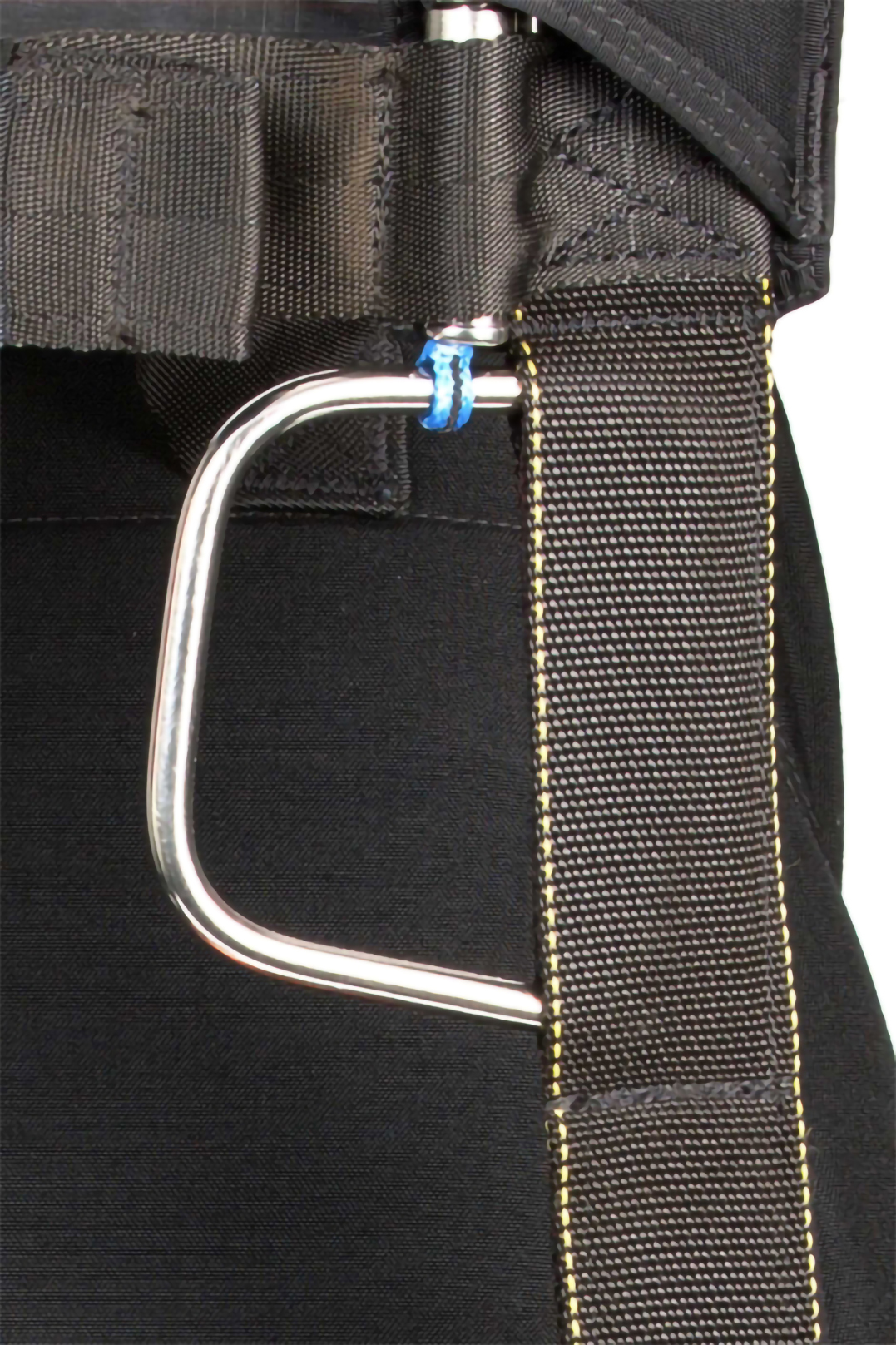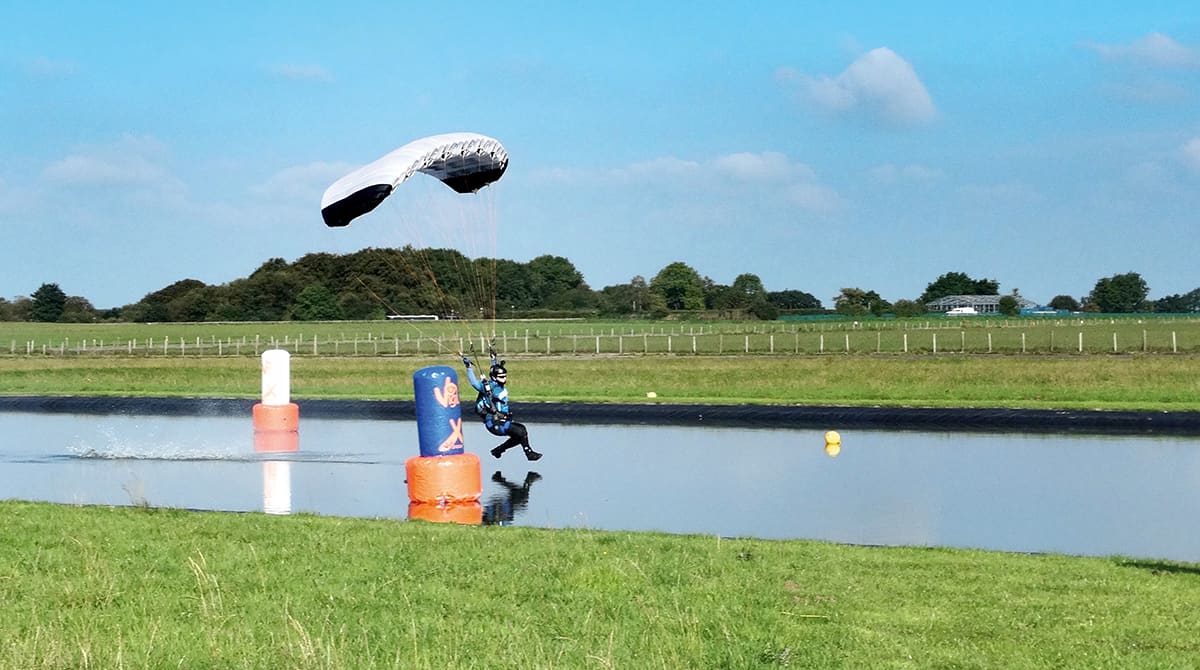By Karen Saunders
Cricket? R Max? Airforce? PDR? Smart? Techno? Tempo? Speed? …at this point, by your reckoning, am I just listing random words?
Are you fairly sure that it doesn’t matter?
Are you convinced that you’re so unlikely to actually use it that you’ll settle for the cheapest possible nylon that will get your kit signed off?
Let’s change that.
At any rate, if you’re like most skydivers, you don’t really know what you have in your reserve tray. While not unusual, this can go to perfectly bizarre lengths: we know one (American) skydiver who looked up on their first reserve ride and discovered a round.
When any given skydiver starts putting together a kit – whether or not it’s their first set, and whether or not they currently happen to be skint – there’s a distinct tendency to emphasise the price tag over every other consideration. Now, I’m not implying that you should sell your mother’s silver to get the best reserve that money can buy – but I am saying that your future, spinning-line-twisted self will definitely thank you for doing your diligence (and, perhaps, investing a bit more in your chances on that spicy off landing).
PACK SIZE MATTERS
Here’s a fun one.
Y’know that reserve you found for tuppence on a Facebook group? The one you were delighted to discover was “the right size for your container”? You probably based your delight on the stated square footage of the reserve – and, to be fair, you probably didn’t have much more to go on.
Before you press “go” on that purchase, though, ask a knowledgeable rigger. The construction method and fabric used to create any given reserve will dramatically affect the pack volume. The volume differential may be so big or so small that the purchase would be a total non-starter in your rig.
Not all canopies are built the same. There’s much to know on the subject, there’s even (!!) a rigger qualification to ingest and understand it all. For instance: ss the construction “chordwise”, “spanwise” or a combination?
Canopies constructed chordwise have fabric panels that run from the back to the front (like most of the canopies you see around these days). Canopies constructed spanwise have panels that run across the span –left to right – of the canopy. Some have both: the R Max Reserve, for instance, has a spanwise bottom skin and a chordwise top skin. Why is this interesting? Spanwise construction dramatically increases pack volume. For comparison purposes (though, given, this does not refer to a reserve canopy), the new Jyro (version three) Safhire and Crossfire canopies with the spanwise “Power Band” at the front have a 30% larger pack volume than the version two.
Is it F111, LPV or a combination of F111 and ZP, Fully ZP? The permutations are endless, and so are the fabrics used. Each fabric has different implications for pack volume – but also implications for reliability, permeability and velocity of degradation. Each ages differently. When you’re going for the cheapo option, the fabric itself might mean that it will pass (or has passed) its useful sell-by sooner than others.
WEIGHT LIMITS CAN BITE
Sure, you think, but the square footage should still be fine for me, even if it’s a mighty squeeze to get into the tray.
Au contraire, unfortunately. Your Facebook find might not even fit you, despite the square footage on the label.
Take this example: The 160ft2 reserve is a stalwartly popular size for a first reserve canopy. But did you know that the Airforce 160, for instance, has an all-up maximum weight limit – and yes, as we know, that includes you, your rig, clothes, your helmet, your shoes, your camera, your phone and everything else stuffed into your pockets – of a scanty 140-180lb (64-82kg). The Performance Designs PDR160, for purposes of comparison, takes 254lb (or 115kg). If you weigh in at 80kg in your boxers, knowing that little nugget before you plump for the Airforce might well save your life.
With the theme of “accidentally overloading your reserve” in mind, let’s add yet another fact to the mix, especially when it comes to older canopy designs: when they do fail, old-fashioned Kevlar lines have an unnerving tendency to snap. Gulp.
BUT A RESERVE IS A RESERVE
It used to be that most skydiving kit was purchased with a rigger in the middle – a rigger that knew the seller and the jumper a bit, or knew someone who knew them and their level, and often also the seller’s reliability and circumstances. This might seem limiting in comparison with a great big internet full of used skydiving gear pouring in from every corner of the planet, but those closer relationships led to much more informed decision-making.
There is so much to know about any reserve canopy you’re considering. A lot rides on this decision: you, mostly, in your most existentially vexing moments. You owe it to yourself to run your options past an expert. A reserve is most certainly not a reserve.
I’ve spent the last year with you in this section of the Mag, sharing just a little of what I’ve learned over the course of my career in the hangar, but before I pass the baton, I’d like to leave you with one more piece of loving advice:
Never be afraid to ask a Rigger. It might just save your life.
Want to find more stories like this? Download the official Skydive the Mag app on either apple or android. Don’t want to download? Don’t worry. You can read the online version here.





